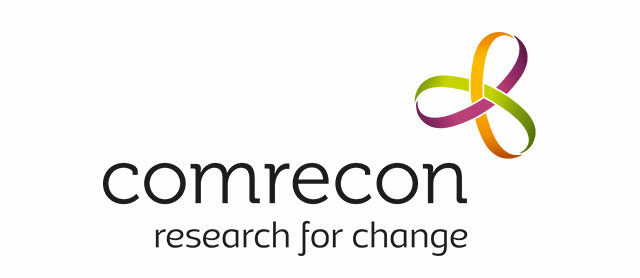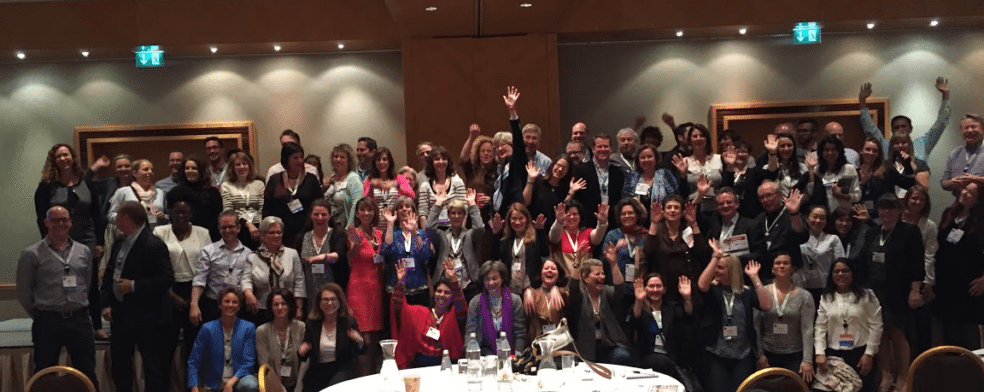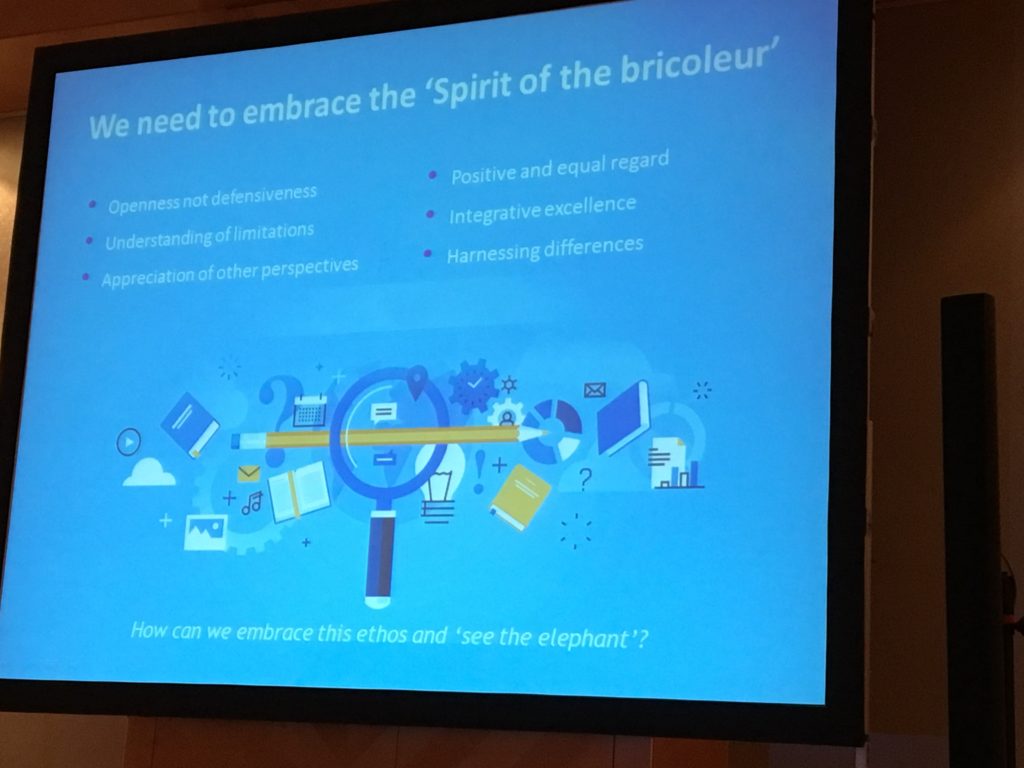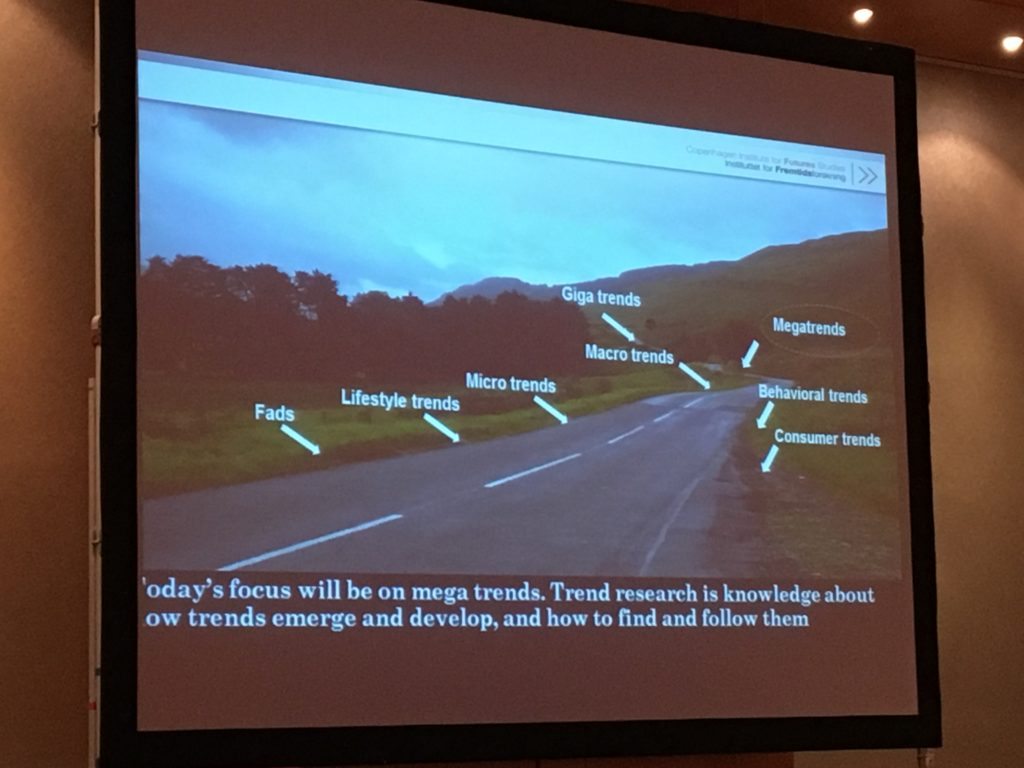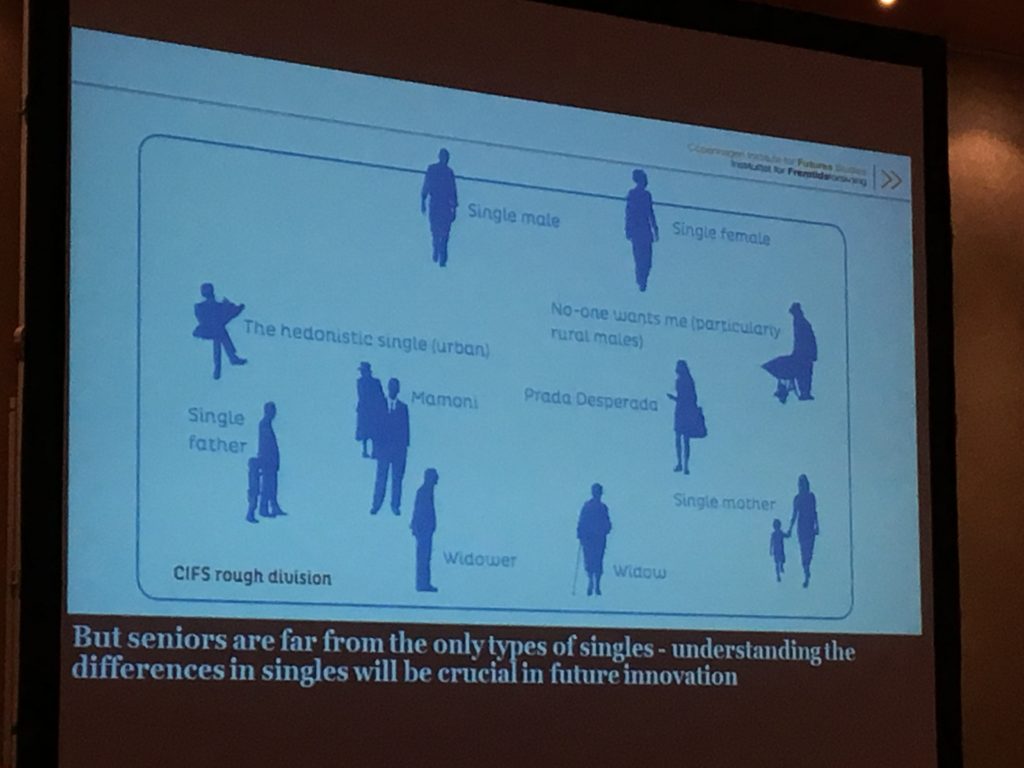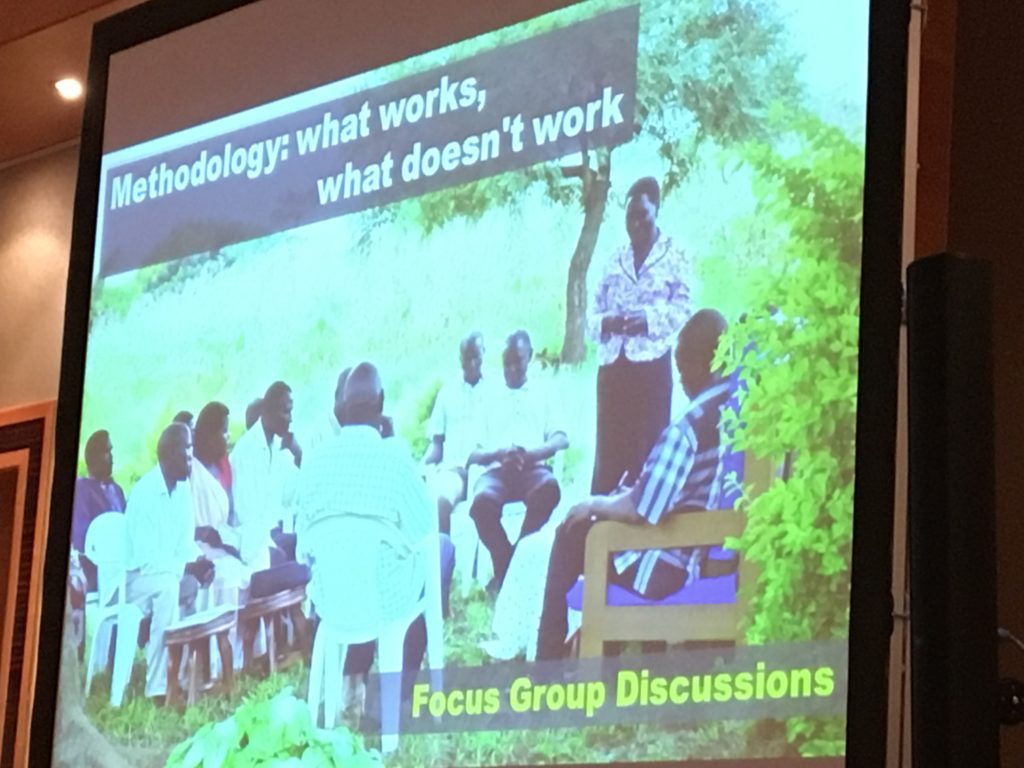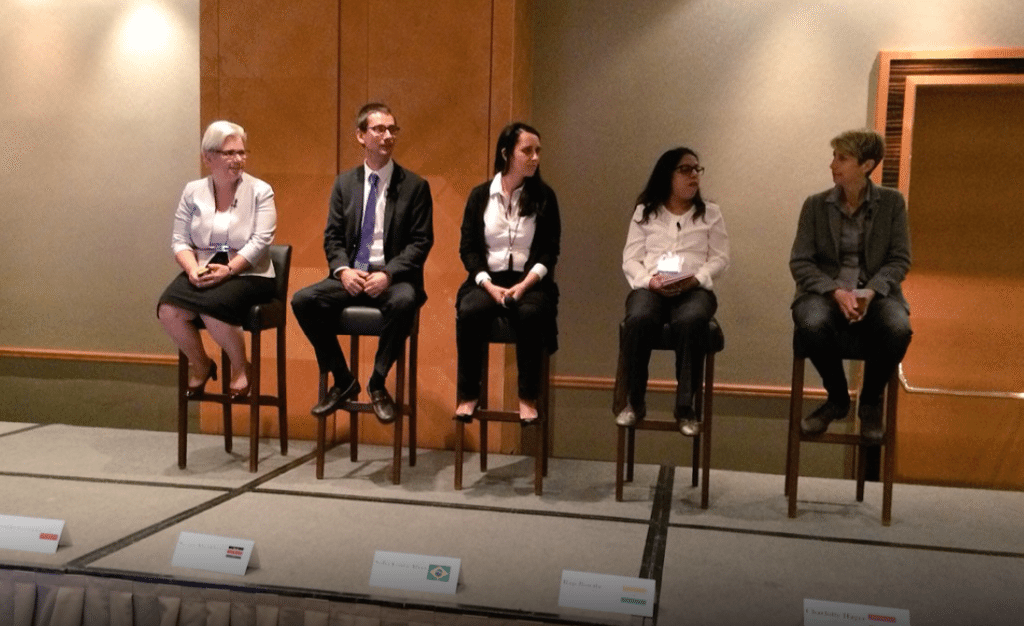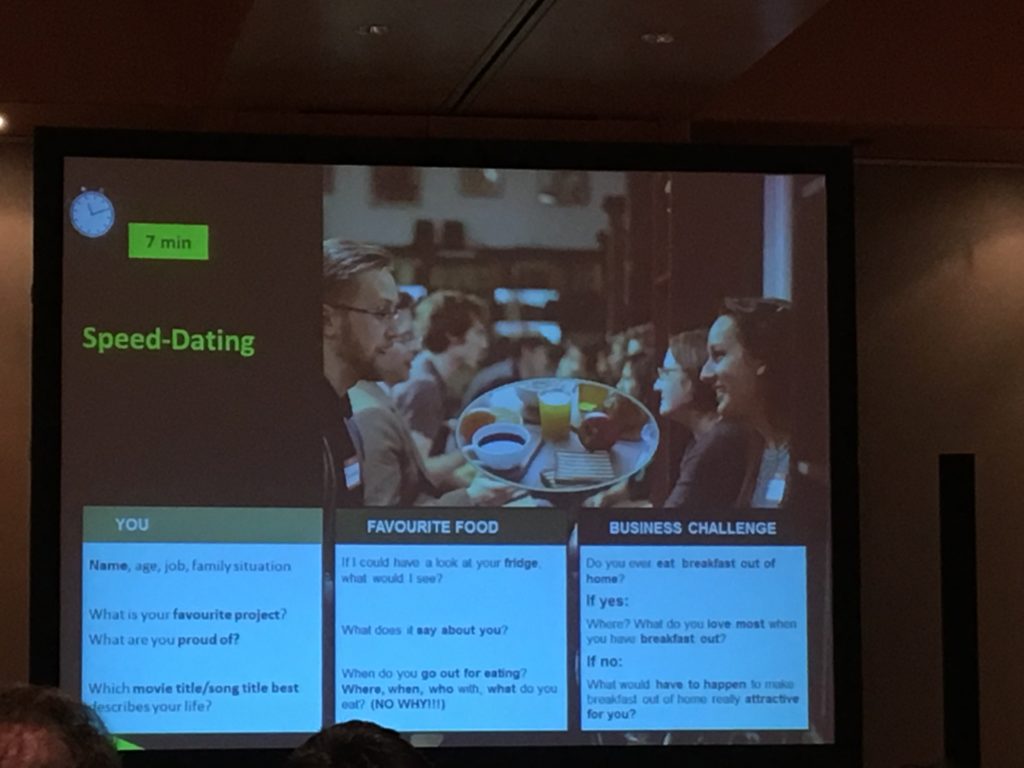For the first time, the Qualitative Research Consultants Association (QRCA) conference took place in Vienna this year. The motto for the QRCA conference was: „Transformative Thinking and Discovery“.
Two days, April 14th and 15th 2016, were full of research inspiration from all over the world. More than 100 qualitative researchers met to share their knowledge in the Vienna Marriot Hotel.
Vienna, birthplace of Qualitative Research
It seems quite natural to hold an international conference on Qualitative Research in Vienna. As Simon Patterson showed in his presentation, the Vienna School is the origin of qualitative research.
Lazarsfeld, Herzog and Dichter were important people for motivation research, for image research as a part of motivation research, and for self image.
Ernest Dichter was the first to conduct in-depth-interviews and to talk freely as in psychoanalyses.
A good research story is about inventing the first convenience food in the 1920ies, the Betty Crocker Cakes: https://bettycrocker.co.uk/the-betty-story/
Peter Tormann continued this theme when he asked: „What has Freud ever done for us?“ Science has influenced how we talk, think and listen. Freud recognized that people are not transparent to themselves. So qualitative listening regarding repetition, hesitation or freudian slips is essential. Qualitative researchers have the task of making the unconscious conscious.
Luke Perry postulated to embrace the spirit of the bricoleur.
From the Roots to the Future
Tamira Snell from the Copenhagen Institute for Future Studies officially opened the congress with the subject of Mega Trends and their implications for the future. Today’s focus is on mega trends. Trend research is knowledge about how trends emerge and develop, and how to find and follow them.
Mega trends happen on a global scale, implications happen in one place in different situations. All trends (as you can see in the picture) form the mega trends. Behavioural and consumer trends are linked to mega trends, the subtrends form the direction of a mega trend. So we need to know the subtrends.
It was nice to see how the future was imagined in the 1950s.
„The Future depends on people.“ Tamira zoomed in on demographic development and selected some mega trends like urbanization, aging and single living. 70% of people will live in cities in the year 2030! 40% will be single households. New mega cities will emerge. Space will become a commodity and a value prop: public space, private space and so on. New needs will come out of this development. The question will be, how will we construct our homes? Now there is great focus on the sofa, next focus area will be the table. Behaviour changes become more urbanized. We are integrating nature into our lives.
Single households are increasing what has an influence on consumption and behaviour patterns. She impressively showed that single households are not single households. There are many types to think about.
There are different forms of singles such as „Single Father“, „Prada Desperada“, „Hedonistic Single“, „Widow „etc. In Denmark you can find 37 different family types! Companies have to understand that being a family involves a lot of different needs.
Technological development will lead us to automation, life style science leaps and the mobile revolution. 50% of current jobs will be automated over the next 20 years. That will lead us to automated decision making in smart living – technology will make our decisions for us. Everything’s becoming „smart“: „smart living“, „smart cities“, „smart nations“, „smart homes“ … Big Data has no limit, everything is connected to make life smart.
Tamira talked about Generation Alpha: The next generation will wear technology on their bodies.
We now live in an access culture more than a sharing culture: We have access to cheap flats with “airbnb.com”, access to luxury bags with “rent one way” etc.
What will happen next? Tamira saiys: A new business logic and the freedom from ownership.
About secrets and the power of language
Daniel Berkal and Tori Gentes talked about the wonder of secrets. What secrets do you have? People want to share secrets, researchers have to motivate the participants to maintain social perceptions.
The goal in qualitative research is to minimize judgement and to maximize joy.
Lesley Croskery exemplified the power of language. In Africa 11 official languages are spoken and it’s crucial which language is used in qualitative research. Language has long been a source of debate and controversy in South Africa. Speaking vernacular brings out more information because the participants can express themselves better, it’s to „let out the inner me“. English is too soft, vernacular is „about being heard“.
The example of Africa can be spread all over the word. And even in Austria there are many kinds of vernacular. It’s so necessary to being a part of the community and to speak their language to be accepted in order to go into the secrets of the participants.
Culture makes the difference in meaning
„It’s not about what people say, it’s about what they do.“ said Oana Popa Rengle from Romania.
As market researchers we have to create an experience that can be observed – for something that doesn’t exist. She postulates putting research in a context where people actually use the product. The best context for „testing cheese“ in her example is the home of the participants. No specific time, no specific location – just experiment in different situations. Funny how she told us about the „warm cheese project“ in Romania: In Romania cheese is cold, but never warm. And it’s never ever the „hero“ of the dish. The question was, how cooking cheese could be established in Romania. Journalists and food bloggers observed, interpreted and created recipes and made cheese culturally fit for Romania. In an online platform, about 50 people discussed their experiences with warm cheese over three weeks. Output was clear advice how to establish it in the existing eating culture. It was a success!
Sergey Sheykhetov showed us a „different world“ and what it´s like to conduct qualitative research in East Africa. (Good to be in Austria)
In CEE countries are huge cultural differences which Agnieszka Gornicka pointed out. The brands of the western countries think that all CEE countries are the same, but the Russians have different motives than for example the Czech. Russians love labels, Czech love nature.
In the international panel with Agnieszka Gornicka from Poland, Sergey Sheykhetov from Kenya, Sofia Costa Alves from Brazil, Raji Bonala from India and Charlotte Hager from Austria discussed the challenges of conducting Qualitative Research.
Getting a part of the observed people and establishing something weird
Jeff Johns conducted a qualitative project for the Royal Academy of Arts to understand motivations of visitors with the goal to improve the visitor experience. He applied a new research approach: „Micro-Anthrop“: being part of the people, don’t interrupt the experience. Methods: observation, interviewing and photographing. He recorded the flow of the visitors, identified visitor types and built a model to bring the analytic team and the client to the space, in order to feel where the experience was working and where not.
The Happy Thinking People, Edward Appleton and Claudia Antoni, showed a case for Mc Donald’s in the USA: „Why quick doesn’t need to be dirty in qualitative research.“
They conducted „speed-dating“ and „consumer safaries“ in New York, Washington, Baltimore and Chicago. The output were 100 ideas in 1 and a half days. Wow!
Lynne Meisner talked about an interesting approach in analysing the „asthma journey“. She did social listening to find out patterns and attitudes – what people say about asthma in twitter, Facebook, youtube, forums etc. She got access to images and language and the key insights brought out asthma metaphors which could be used as stimulus material in co-creation-workshops with patients, the ad agency, the pharma client and the research team. Great to see that Semiotics can be used for metaphoric work and analysis of images and language.
Food as a projective technique is used by Rebecca Bryant and Tone Graaten. „Food generates more about values than you think.“ They had a look into people’s kitchens to introduce the participants. What does someone’s food choices tell us about them? What do you think about someone who eats vegetables or asparagus or steak or whatever? How would this person describe himself?
You can also ask: „If company XY was a food, ___?“ „If your country was a vegetable, it would be ____?“ We learned, Germany would be a potato – I think Austria would be too 😀
What about segmentations of consumers? Abbey Clemens says, Segmentations are dead, it’s limiting, but differentiation is about the USP. Apple and Samsung have the same consumer profile – you have to attract people for the same reasons. The question is, how do you find the target consumers? You also have to ask: What should they see in your brand and what do you want your brand to stand for? Align with a mindset. How do they talk, how do they interact with branches and brands, what are their life stories? How did it come to love that brand. We also have to use qualitative research to explore the role of different channels.
„Make a change – worldwide“ was an impressive case of Ilka and Janina Kuhagen about climate change. In 3 steps they conducted a worldwide study on the topic. Cloud listening (social media), a qualitative and quantitative survey were mixed. 23 million posts were filtered to find the relevant topics and opinions.
Sense and sensitivity
You thought we have 5 senses? Wrong! We have 9. So Rebecca Harrison and Kajel Patel said. Besides the classic 5 senses we have four more which are:
- sense of temperature
- sense of pain
- sense of balance
- sense of body sensation
Our senses rule everything, subconscious connections work all the time. Eating is a multi sensory experience. When you eat a lemon, you don’t only eat a lemon – connotations come up to your mind. Maybe you think about holiday, a Gin & Tonic etc. Brands need to engage on a multi-sensorial level to survive and thrive.
Using this knowledge in research is the topic of Maria Kreuzer and her developed method of „Multi-Sensory-Sculpting“. Every consumer has embodied brand knowledge. We store the actual activation pattern. As researchers we have to activate the knowledge and the senses. Most of the people cannot express themselves so it’s a perfect way to sculpt the brand experience using different materials.
Semiotic Research for better advertising
Charlotte Hager talked about Semiotic Research and showed examples of Tropicana packaging and the Vienna Insurance Group case to demonstrate how important it is to use the right signs. Because everything is a sign in the language of advertising. Every sign (colour, facial expression, clothing, shoes, arrangement of people …) should have a specific purpose and convey the intended message and values of the brand or product.
Here you can see Charlotte’s presentation:
Some crazy little things beyond
Marc Engel and Pascal Patenaude engaged the audience with their impressive „show“ of „improv“. I got some very good statements out of their presentation, like:
„Go beyond your comfort zone. Get comfortable with discomfort.“
„Mistakes are happy accidents. Mistakes are a gift to find another solution.“
„Accept the unexpected.“
„Try to uncover the truth – improv helps you being in touch with.“
„We are all retired children. It’s amazing what happens, when we play.“
„If you want to connect with each other you need to trust.“
And at the end of the conference we did a little „Quali Feud“ with Nikki Lavoie.
Key facts about Qualitative Research
Qualitative Research…
→ is about being part of the consumers world and mindset
→ has to take care of the context
→ produces insights to understand behaviour
→ evolves needs
→ finds patterns in social media
→ is about culture and life stories
→ is about signs and meaning of signs
→ is about knowing mega trends and subtrends
→ is about improv
→ is about finding and eliciting secrets
→ is about playing a game and open minds
→ is creative
You can find some impressions of the QRCA conference in this picture gallery.
